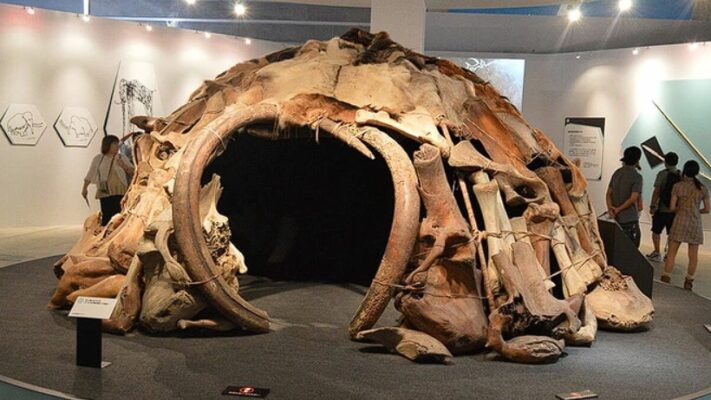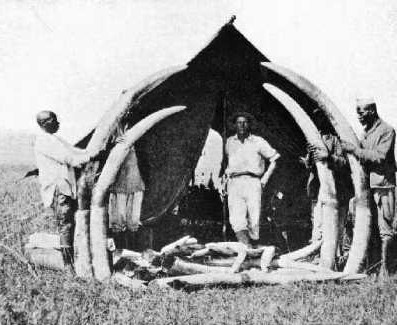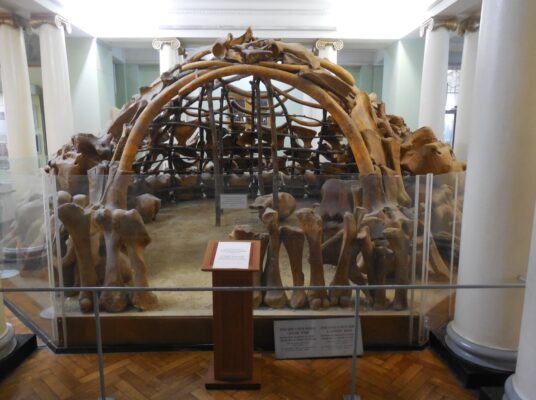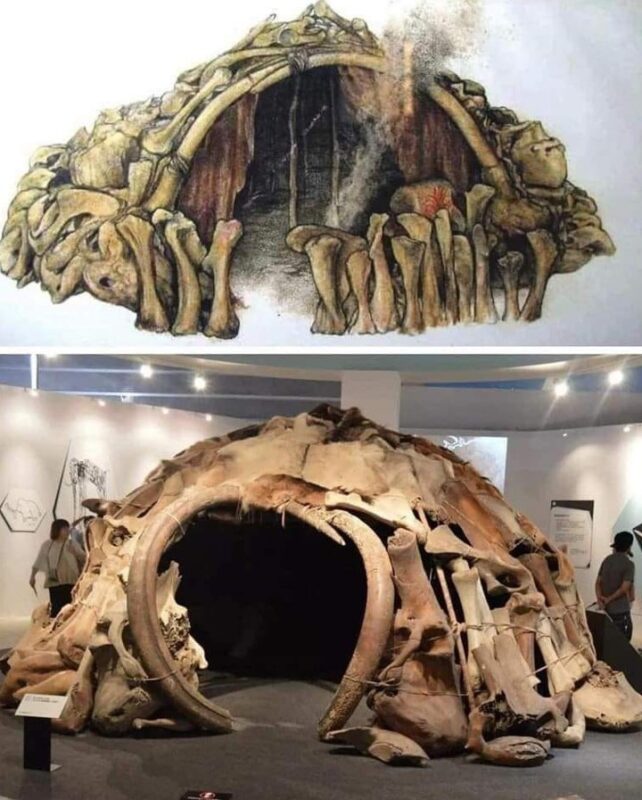In 1965, a remarkable discovery in Mezhyrich, a village in central Ukraine, The Mammoth Bone Huts of Mezhyrich provided a fascinating glimpse into human life during the Ice Age. A farmer, while expanding his wine cellar, uncovered a mammoth’s lower jaw, leading to the excavation of four ancient huts built entirely from mammoth bones. These structures, dating back approximately 15,000 years, are among the oldest known shelters created by prehistoric humans.

1. The Discovery of the Mammoth Bone Huts
1.1 How the Huts Were Found
The journey began with a farmer’s chance discovery of a mammoth jawbone. Subsequent archaeological investigations uncovered not just one, but four huts constructed from mammoth bones. These discoveries sparked global interest in the prehistoric era.
1.2 What Makes This Discovery Unique
The Mezhyrich site stands out as one of the earliest examples of human ingenuity. The use of mammoth bones as structural materials highlights the adaptability and resourcefulness of our ancestors in a harsh environment.
1.3 The Historical Context
Dating back to around 15,000 years ago, these huts were built during a period when humans faced extreme climatic challenges. The shelters provide crucial insights into survival strategies during the Ice Age.\

2. Structure and design The Mammoth Bone Huts of Mezhyrich
2.1 The Construction Method
The huts were circular in shape, with diameters ranging from 6 to 10 meters. Mammoth bones and tusks were carefully arranged to form the framework, and experts believe animal skins were used as coverings for added insulation.
2.2 Central Hearth and Surroundings
Each hut featured a central hearth, providing warmth and a place to cook food. Stone tools and other artifacts were discovered around the structures, offering a glimpse into daily life at the time.
2.3 Environmental Adaptation
The design of the huts demonstrates how early humans adapted to extreme cold and strong winds, using locally available materials to create durable shelters.

3. The Significance of the Mezhyrich Site
3.1 A Rare Insight into Prehistoric Life
The Mezhyrich huts offer a rare opportunity to study the ingenuity and resilience of Ice Age humans. The site reveals much about their social organization, tool usage, and survival strategies.
3.2 Archaeological and Cultural Impact
This discovery has significantly advanced our understanding of prehistoric architecture and human adaptation. It also highlights the importance of preserving such sites for future generations.
3.3 The Legacy of the Mezhyrich Huts
The Mezhyrich site is a testament to human creativity and perseverance. It continues to inspire researchers and serves as a reminder of the challenges faced by our ancestors in their quest for survival.
See more: The Magnificent Statue of Athena: A Symbol of Ancient Greek Art and Culture
Conclusion
The mammoth bone huts of Mezhyrich represent a remarkable chapter in human history. These ancient shelters, dating back 15,000 years, showcase the innovative spirit of early humans in the face of adversity. As we study these prehistoric marvels, we gain a deeper appreciation for the resilience and ingenuity that have defined humanity throughout the ages.


CÁC TIN KHÁC
Mark Twain & Olivia Langdon: A 36-Year Love Story Filled with Laughter and Devotion
The Tollund Man: A 2,400-Year-Old Mystery Preserved in a Danish Bog
Skara Brae: Scotland’s Hidden Neolithic Village
Porta Nigra: The Hidden Depths of Trier’s Iconic Roman Gate